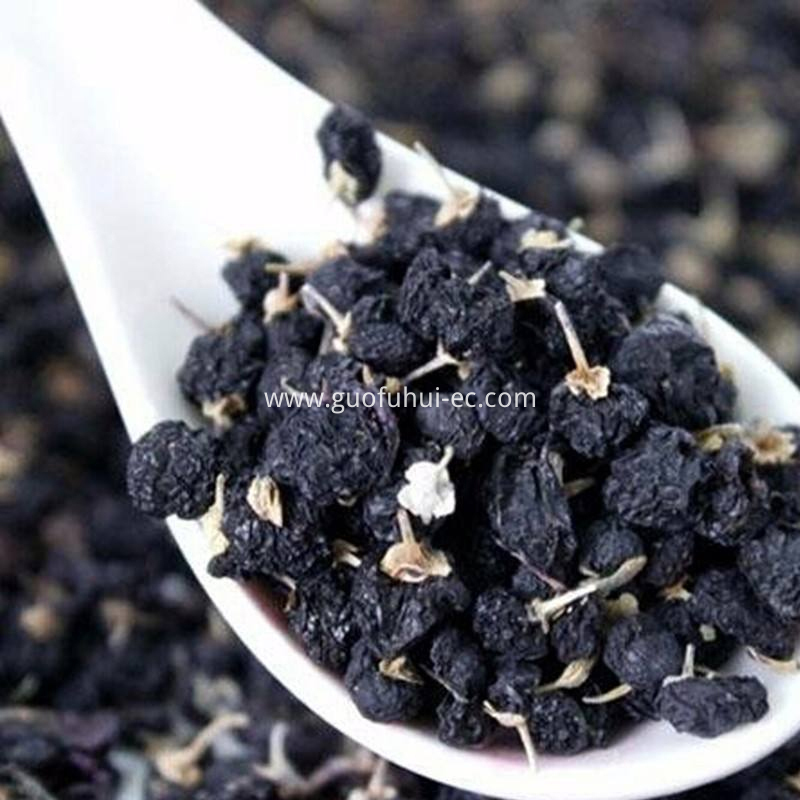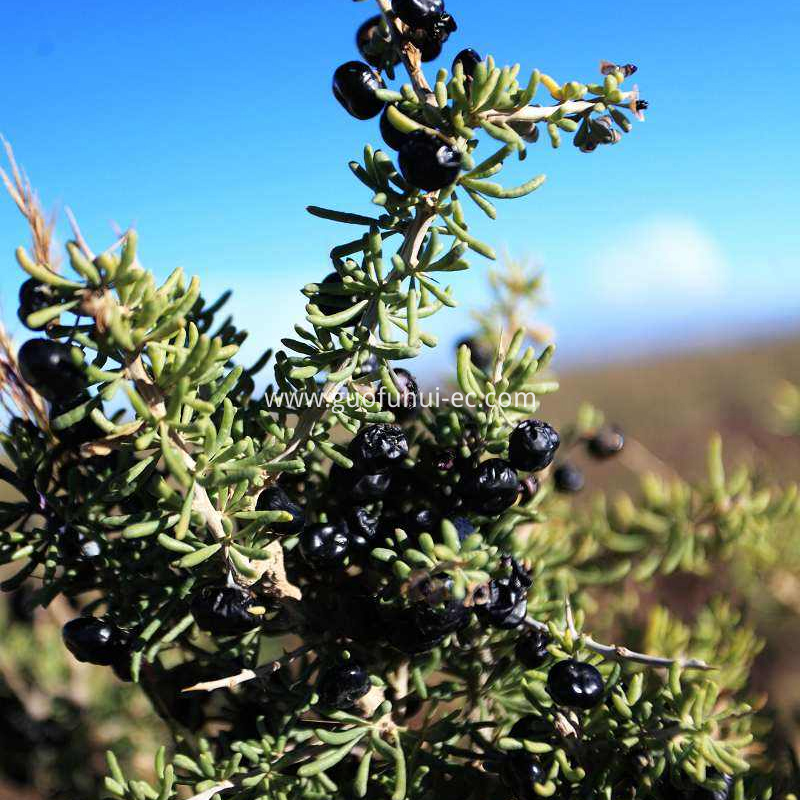The top black wolfberry generally refers to black wolfberry over 0.6 centimeters. Wild black wolfberry is so large that it is very few, less than 1/10. The anthocyanin content is high and the size of peanut is so large that it can also be eaten.
Chaidamu black wolfberry, multiple spunlash shrubs, growing in the desert area of 2600 meters to 3000 meters above sea level, has the reputation of "a treasure basin" in the Qaidam Basin of Qinghai, where the altitude is high, the climate is dry, the ecological environment is clean and pollution-free. The unique natural environment has created the unique nutritional value of black wolfberry.
Anti aging, improve sleep: anti aging is one of the most important effects of black wolfberry, a large number of anthocyanins can be a good antioxidant, the elimination of human free radicals, has a significant anti aging effect. Anthocyanins can penetrate the blood-brain barrier, protect brain neurons from oxidation, stabilize brain tissue, and protect the brain from harmful chemicals and toxins. After eating anthocyanins in black wolfberry, the quality of sleep can be significantly improved.
The content of calcium, magnesium, copper, zinc and iron is higher than that of Lycium barbarum. The contents of calcium, magnesium, copper, zinc and iron are higher than that of red wolfberry, and the contents of vitamin and fat are much higher than those of red fruit and wolfberry. Calcium, magnesium, copper, zinc, manganese, iron, lead, nickel, cadmium, cobalt, chromium, potassium and sodium have an important role in maintaining the normal physiological function of the human body. Compared with the red fruit Lycium barbarum, the content of iron, calcium, magnesium, zinc and copper in the black wolfberry is far higher than the average content, and the content of potassium and manganese is far below the average, and the content of sodium and the content of sodium are much lower than that of the red fruit Lycium barbarum. It's basically the same.







